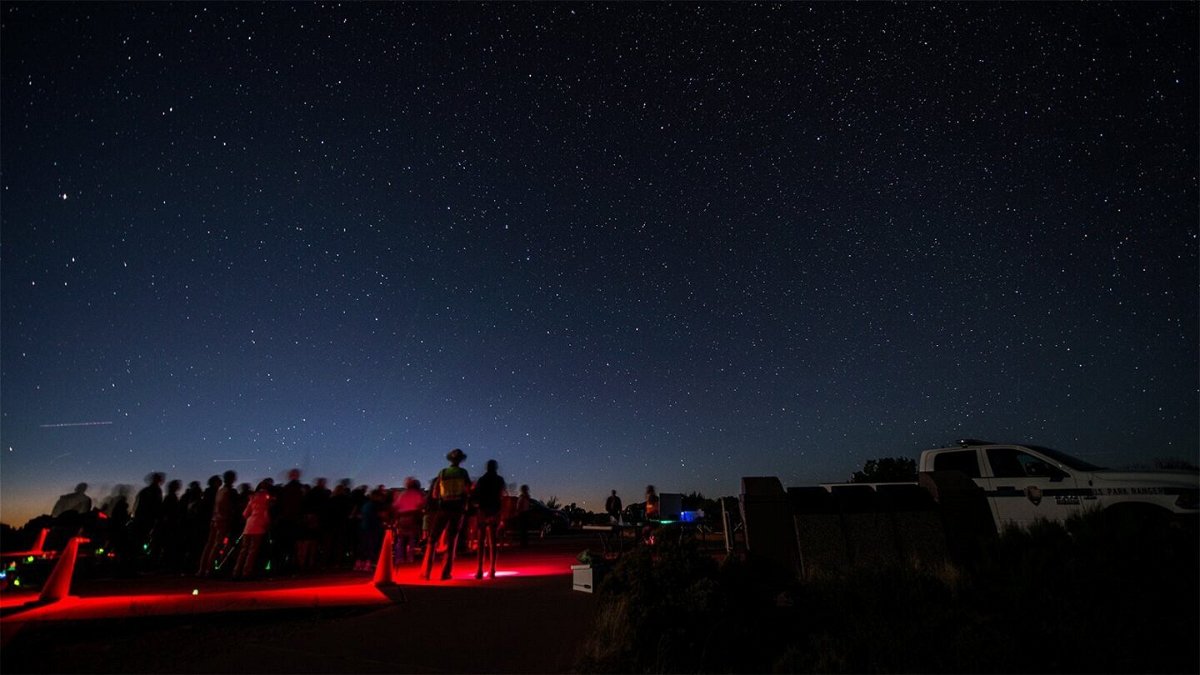The Delta Aquariids meteor shower peaks near July’s end. Here’s how to watch

The Delta Aquariids meteor shower will light up the night sky on Juy 28-29.
By Kristen Rogers, CNN
Between midnight and dawn on Wednesday and Thursday (July 28 — 29), the Delta Aquariids meteor shower will light up the night sky.
As Earth orbits the sun, it encounters the lopsided orbit of a comet, the icy surface of which leaves behind dust and rocks as they boil off from the sun’s heat. When these space rocks fall toward our atmosphere, “the resistance — or drag — of the air on the rock makes it extremely hot,” according to NASA. “What we see is a ‘shooting star.’ That bright streak is not actually the rock, but rather the glowing hot air as the hot rock zips through the atmosphere. When Earth encounters many meteors at once, we call it a meteor shower.”
Suspected to originate from Comet 96P Machholz, the Southern Delta Aquariids meteor shower occurs any time between July 12 and August 23 annually. This year, it peaks during the nights of July 28 and 29. Alpha Capricornids, a weaker meteor shower, also peaks these same nights. Known to emit bright fireballs during its peak, Alpha Capricornids will be visible for everyone.
The Delta Aquariids meteor shower can be best seen from people in the Southern Hemisphere. The meteors, which tend to number 10 to 20 per hour and fly at 25 miles per second, are most visible between 2 a.m. and 3 a.m. in all time zones, when the faint constellation Aquarius the Water Bearer — the shower’s radiant point — is highest in the sky, according to EarthSky.
If you go outside for about 30 minutes before the shower, your eyes can adjust to the darkness, according to NASA. For those in the Southern Hemisphere, the radiant is closer to overhead; people in the Northern Hemisphere should look to the southern part of the sky. You don’t need to use a telescope, and people don’t have to focus so much on radiant points as the meteors will appear in all parts of the sky, EarthSky advised.
A bright waning gibbous moon (74% full) will obscure some of the meteor shower this week, which makes watching in an area with little to no light pollution — such as from buildings and traffic — critical. But in early August, 13% full moon (a waxing crescent moon) will simplify viewing the meteors even though they’ll be off-peak.
A meteoric talent show(er)
A dark sky is also important if you want to see Delta Aquariids cross paths with the Perseid meteor shower. Perseid, the most popular shower of the year, stems from a different radiant point, is brighter than Delta Aquariids and peaks during the early mornings of August 11-13.
Although understanding and observing radiant points isn’t crucial for viewing Delta Aquariids, it is necessary for distinguishing between Delta Aquariids and the Perseids shower in August, according to EarthSky.
While the Delta Aquariids radiate from the vicinity of constellation Aquarius, Perseids flies from constellation Perseus, which is in the northeastern part of the sky. So if you’re in the Northern Hemisphere, meteors appearing from the northeast are Perseids, whereas meteors coming from the south are Delta Aquariids, according to EarthSky.
There are more meteor showers you can catch during the remainder of 2021, according to EarthSky’s 2021 meteor shower guide:
- October 8: Draconids
- October 21: Orionids
- November 4-5: South Taurids
- November 11-12: North Taurids
- November 17: Leonids
- December 13-14: Geminids
- December 22: Ursids
The-CNN-Wire
™ & © 2021 Cable News Network, Inc., a WarnerMedia Company. All rights reserved.
CNN’s Sarah Molano and Ashley Strickland contributed to this story.